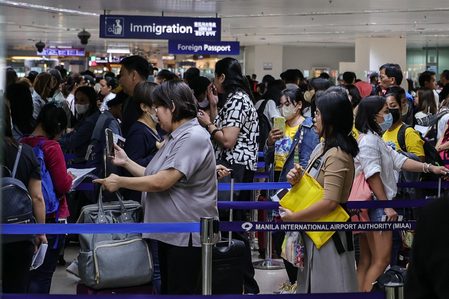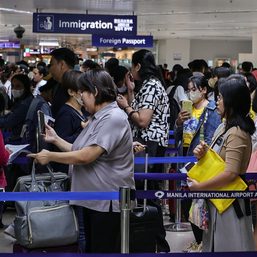SUMMARY
This is AI generated summarization, which may have errors. For context, always refer to the full article.

MANILA, Philippines – Traveling through one of the world’s “most stressful” airports might just be more bearable with Oona’s newly launched flight delay insurance.
Touted as the “first of its kind in the Philippines,” the Smart Flight Delay Insurance will provide passengers with access to partner airport lounges when an international flight is delayed for more than an hour. It also comes with a P10,000 coverage for injuries or death.
The insurance product’s launch comes at a time when passengers have been especially hounded by flight delays, which airlines have blamed on an industry-wide shortage of spare parts and engine problems. At one point, the on-time performance of low-cost carrier Cebu Pacific sank to just 50% to 60%, prompting the Senate to summon airlines to explain the situation.
“When that flight delay happens, it’s a painful experience,” Abhishek Bhatia, Oona Insurance founder and group chief executive officer, said during a media roundtable. “As soon as the flight is delayed, and if you had bought the flight delay insurance product from us, we’ll push the lounge voucher to your phone, which you can go use.”
Travelers must purchase the coverage, which costs P149, at least two hours before their flight. Once an airline announces a delay of more than an hour, then they get to avail of the lounge access without needing to file any paperwork.
Oona’s emerging strategy
Oona Insular Insurance was formerly known as Mapfre Insurance before Insular Life (InLife) and Oona Philippines entered into a joint venture agreement to take over the company early in 2023.
InLife – one of the country’s oldest life insurance companies – bought 40% of shares while Oona Philippines – the local arm of the Singapore-based group of companies – acquired the rest of the 60%.
As a relative newcomer to the Philippines’ already-crowded insurance industry, how does Oona plan to stand out? They’re not exactly vying for a slice of the existing market, according to their founder.
“First of all, we’re not fighting for a share of the pie,” Bhatia said. “Where the Philippines is now, the per capita incomes are going to go up. A lot of people are getting into the middle class…. As people start creating assets, they will feel the need for protecting their assets. That’s where insurance comes in. That’s where we come in.”
Oona also plans to leverage artificial intelligence and technology to stand out from its competitors. Their new initiative? An AI-driven app that streamlines car insurance claims, allowing customers to document vehicle damage via their phones.
“We’re looking to launch an AI-based technology where consumers can actually take their phone and take photographs and videos of the car as directed by the app. And once that’s uploaded, the remote survey is done. And we can assess the damage and actually offer a settlement to the customer almost real time,” Bhatia told reporters.
The remote survey is being targeted for launching in the fourth quarter of 2023 or the first quarter of 2024. – Rappler.com
Add a comment
How does this make you feel?






There are no comments yet. Add your comment to start the conversation.